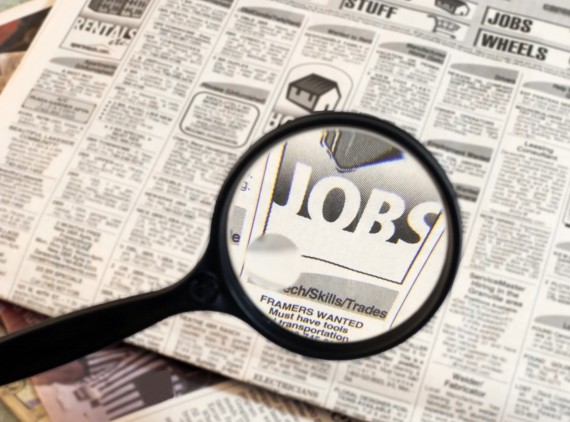Job Creation Declines In September In Report Likely Impacted By Hurricanes
A very weak jobs report thanks mostly to the impact of two Category 5 hurricanes.
Thanks most likely in no small part to the twin impacts of Hurricane Harvey in Texas and Hurricane Irma in Florida, the September Jobs Report came in fairly weak, with the first decline in jobs created in seven years. Indeed, the Bureau of Labor Statistics, put this disclaimer at the top of the report this month:
Hurricane Irma made landfall in Florida on September 10–during the reference period for both the establishment and household surveys–causing severe damage in Florida and other parts of the Southeast. Hurricane Harvey made landfall in Texas on August 25–prior to the September reference periods–resulting in severe damage in Texas and other areas of the Gulf Coast.
Our analysis suggests that the net effect of these hurricanes was to reduce the estimate of total nonfarm payroll employment for September. There was no discernible effect on the national unemployment rate. No changes were made to either the establishment or household survey estimation procedures for the September figures. For both surveys, collection rates generally were within normal ranges, both nationally and in the affected states. In the establishment survey, employees who are not paid for the pay period that includes the 12th of the month are not counted as employed. In the household survey, persons with a job are counted as employed even if they miss work for the entire survey reference week (the week including the 12th of the month), regardless of whether or not they are paid. For both surveys, national estimates do not include Puerto Rico or the U.S. Virgin Islands.
Further information on the impact of the storms on this month data can be found in this statement from the Commissioner of the BLS. Economist Jared Bernstein also agrees that this month’s numbers are largely due to the impact of Irma and Harvey and that the jobs market remains essentially solid.
Keeping these caveats regarding storm impact in mind, let’s look at the numbers:
The unemployment rate decreased by 0.2 percentage point to 4.2 percent in September, and the number of unemployed persons declined by 331,000 to 6.8 million. Both measures were down over the year. (See table A-1.)
Among the major worker groups, the unemployment rates for adult men (3.9 percent) and Blacks (7.0 percent) declined in September. The jobless rates for adult women (3.9 percent), teenagers (12.9 percent), Whites (3.7 percent), Asians (3.7 percent), and Hispanics (5.1 percent) showed little change. (See tables A-1, A-2, and A-3.)
The number of long-term unemployed (those jobless for 27 weeks or more) was essentially unchanged in September at 1.7 million and accounted for 25.5 percent of the unemployed. (See table A-12.)
The employment-population ratio increased by 0.3 percentage point to 60.4 percent in September and has increased by 0.6 percentage point over the past 12 months. The labor force participation rate, at 63.1 percent, changed little over the month and has shown little movement over the year. (See table A-1.)
(…)
Total nonfarm payroll employment was little changed in September (-33,000), after adding an average of 172,000 jobs per month over the prior 12 months. In September, a steep employment decline in food services and drinking places and below-trend growth in some other industries likely reflected the impact of Hurricanes Irma and Harvey. Employment rose in health care and in transportation and warehousing. (See table B-1.)
Employment in food services and drinking places dropped sharply in September (-105,000), as many workers were off payrolls due to the recent hurricanes. Over the prior 12 months, food services and drinking places had added an average of 24,000 jobs per month.
In September, health care added 23,000 jobs, in line with its average monthly gain over the prior 12 months (+27,000). The employment increase in ambulatory health care services (+25,000) was partially offset by a decline in nursing care facilities (-9,000).
Employment in transportation and warehousing increased by 22,000 in September. Job gains occurred in warehousing and storage (+5,000), couriers and messengers (+4,000), and air transportation (+3,000).
Employment in financial activities changed little in September (+10,000). A job gain in insurance carriers and related activities (+11,000) largely reflected hurricane-recovery efforts. The gain was partly offset by losses in activities related to credit intermediation (-4,000) and in commercial
banking (-3,000). Over the year, financial activities has added 149,000 jobs.In September, employment in professional and business services was little changed (+13,000). Over the prior 12 months, job growth in the industry had averaged 50,000 per month.
Manufacturing employment was essentially unchanged in September (-1,000). From a recent employment trough in November 2016 through August of this year, the industry had added an average of 14,000 jobs per month.
Employment in other major industries, including mining, construction, wholesale trade, retail trade, information, and government, showed little change over the month.
In addition to these numbers, the Bureau also reported adjustments to the employment numbers for the previous two months that result in a net downward revision for that period. July’s numbers were revised downward from +189,000 to +138,000, and August’s numbers, which had disappointed many due to the fact that they fell below estimates, were adjusted upward from +156,000 to +169,000. This makes for net downward revisions for both months at -38,000. Combined with this month’s numbers puts the average for the past three months at +91,000 net jobs created, the weakest we’ve seen that average for quite some time. For the year, we’ve seen a total of 1,379,000 new jobs created since January for a monthly average of +153,000 jobs per month, which is well below the level where we’ve seen this average in some time. During his campaign for President, Donald Trump promised to create 25,000,000 jobs during his Presidency. That would require the creation of 3,125,000 per year over an eight-year term for an average of 261,000 new jobs per month. Over a four-year term that would require 6,250,000 per year, for an average of 521,000 new jobs per month. At the current three-month average, it would take 22 years to get to Trump’s goal. At the current average for the year-to-date, it would take more than 13 years. And that assumes no recessions in the intervening period.
Looking further into the data, there is some good news in an otherwise very disappointing month. While the average workweek was unchanged for the month across the board, average hourly earnings overall increased by 12 cents to $26.55. This puts the year-over-year increase a 74 cents, or 2.9%. Additionally, numbers such as long-term unemployment, labor force participation, and the employment ratio were all relatively unchanged. Additionally, the top-line unemployment number fell 2/10’s of one percent to 4.2%. This demonstrates that the jobs market remains in roughly the same shape it has been for the balance of the year. Additionally, the increase in wages likely means that absent evidence that the downturn in jobs creation is related to more than just the storms, the Federal Reserve is likely to go forward with another interest rate increase after its December meeting.
All of this would seem to indicate that this month’s jobs creation number — or I guess we should call it a “jobs lost” number this month — is largely a storm-related anomaly and that we will likely see the jobs picture bounce back in the coming months. In fact, the numbers for coming months could actually end up being temporarily better than they otherwise would be due to some sectors of the economy such as construction hiring additional people to assist in the recovery efforts in Texas, Florida, and to some extent Puerto Rico and the Virgin Islands even though these areas are not counted in the monthly report from the BLS. It also means that there isn’t much of a point in trying to draw any broad conclusions about the state of the economy based on this report alone. Let’s see where the numbers go for the rest of the year and go from there.





The caveats about the storms are worth noting. However, I can only imagine what Trump would be tweeting if these job numbers came out while someone else was President.
Clearly, Obama’s misguided belief in accelerated global warming caused the decline in the job creation figures for September.
Also, a time when the seasonal, summer jobs at the beaches, theme parks, resorts, and hotels are ending.